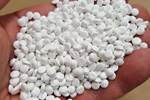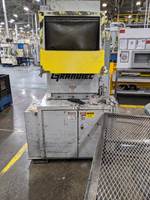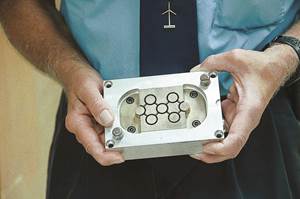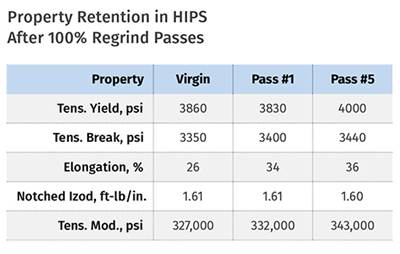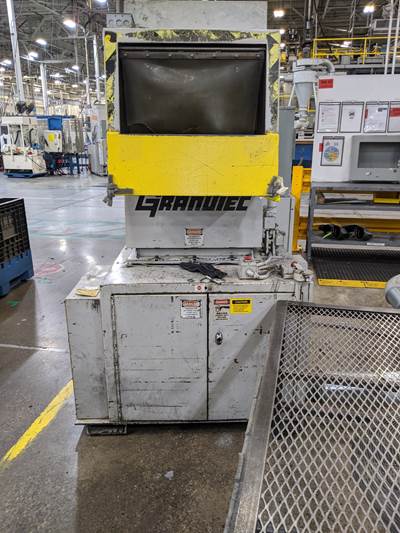In our first installment of this series on how material costs influence job quoting, we focused on the base polymer and colorants. Two more factors that should be considered when quoting a molded part are scrap and regrind, which are not synonymous. No one molds perfect parts on the first shot—especially if the part is clear, translucent, or light colored. Generating scrap is inevitable. There are also dozens of rejectable issues during production that generate scrap, such as flash, shorts, warp, burns, scratches, dirt, etc.
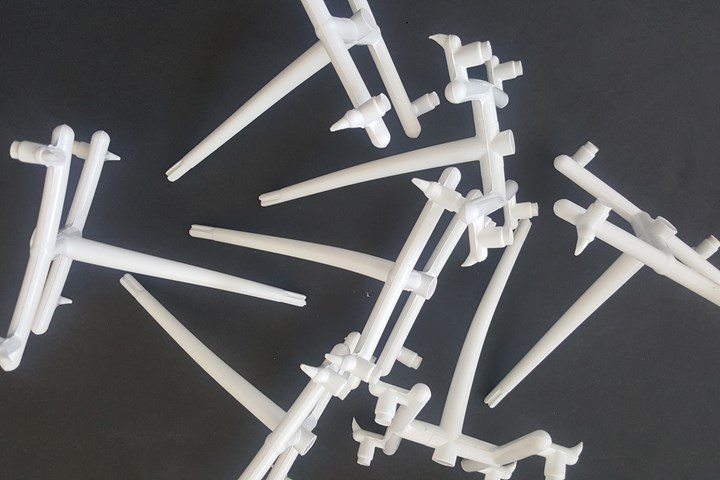
Add a scrap factor to your material cost estimate. Runners must be collected, reground and stored in inventory—all of which costs money. How much regrind can you use?
Therefore, you should add a scrap factor when quoting parts. If you are molding flower pots, that scrap factor will be very low. If you are molding medical, automotive or optical parts, that scrap factor could be very high. The amount to use is usually a judgement call based on experience. My hat goes off to any molder who has gathered data on past scrap rates for different types of parts, molds and materials, and prudently applies them to their quotations.
Most molds have a cold-runner system. The runners need to be collected, ground up, and stored in inventory. Did the request for quotation specify the amount of allowable regrind that can be used, or is it “virgin only”? UL Standard 746D—Standard for Polymeric Materials—Fabricated Parts states: Parts shall not be molded from material that contains more than 25% thermoplastic regrind by weight, that has been dry blended by the molder with the same grade of virgin material, unless the results of a separate investigation indicate acceptable performance for the specific part.
My opinion, and that of many of my colleagues is that, if allowable, a molder should use 0% or 100% regrind … nothing in between. The reasons are beyond the scope of this article, although John Bozzelli provided the rationale in his December 2014 column, Another Way to Deal with Regrind. It is important to understand how to maintain a good molding process, as well as to know the potential effects regrind has on the physical properties and function of the parts. This can be a liability issue, and therefore should not be taken lightly.
My hat goes off to any molder who has gathered data on past scrap rates for different types of parts, molds and materials, and prudently applies them to their quotations.
It takes a lot of labor to grind up parts and runners, and it takes up a lot of valuable floorspace—especially for custom molders that run all sorts of materials in a wide variety of colors and fillers. Regrind also poses a risk for cross-contamination with other materials. Even your best material handler can’t tell the difference between an unmarked box of reground black PS and reground black nylon. Picture a new material handler dumping 100 lb of black nylon regrind on top of a partial gaylord of black PS regrind. Now picture the foreman seeing what he did. Solution: Have the material handler get a shop vacuum and suck the nylon and an inch or three off the top of the gaylord in order to get rid of the contamination. I’ve seen it happen, and I just shake my head.
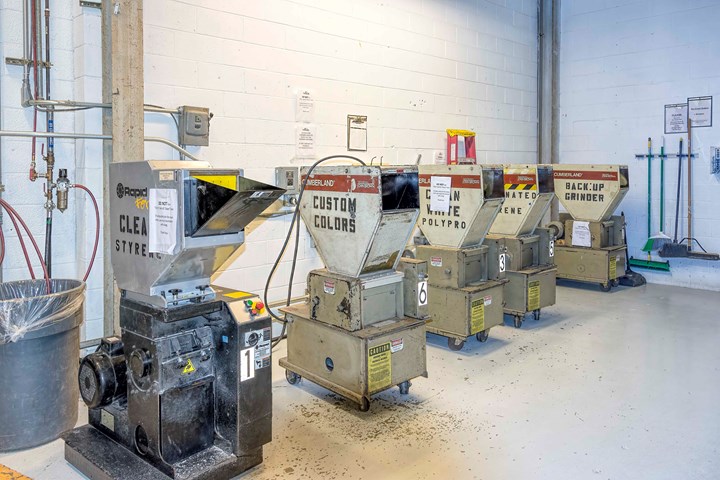
Grinding scrap costs money for labor, energy and floorspace. Keeping regrind of different resins and colors segregated and uncontaminated adds complexity.
On occasion, the weight of the runner is even more than the weight of the parts. Even if 100% regrind is allowed, you may soon be looking for a scrap dealer to take the unused regrind off your hands for pennies on the dollar— about what it costs just to grind it up. Still, it is the preferred alternative to increasing the size of the local landfill. The best you can hope for is to be able to use the regrind in a different part. In this scenario, I still factor the scrap cost into the piece price and reap the benefit of using it somewhere else.
Another source of scrap is “wet” material. Hygroscopic materials not properly dried but inadvertently or unknowingly processed anyway are considered wet material. This renders most materials completely unusable—ABS being the exception. In Part 1 of this series I discussed adding a profit margin to the cost of the raw material. This is another reason for adding that margin, but this one is specific to hygroscopic materials.
When you request a price for a hygroscopic material, ask for the price based on it being packaged in foil-lined bags—not gaylord boxes. This might cost a few cents more per pound. Material suppliers produce hygroscopic resins in a dry condition. If they immediately package the material in a bag or a box that has a vapor barrier, such as aluminum, it remains dry until it is opened. In many cases, the material does not need to be initially dried.
However, once it is opened it will start to absorb moisture. Depending on the humidity and the length of time, it will then need to be dried. Continually opening 55-lb bags of material takes a little more labor, but it is a good insurance policy against getting wet material and rejected parts. Even an unopened gaylord box of material can absorb enough moisture during a production run that it can begin to produce rejectable parts before the gaylord is empty if it is not dried. What many molders don’t realize is if an opened bag or box of hygroscopic material is stored in a humid environment, depending on the amount of moisture absorbed, it can literally take days to dry it sufficiently. Not hours—days.
Drying Costs Money
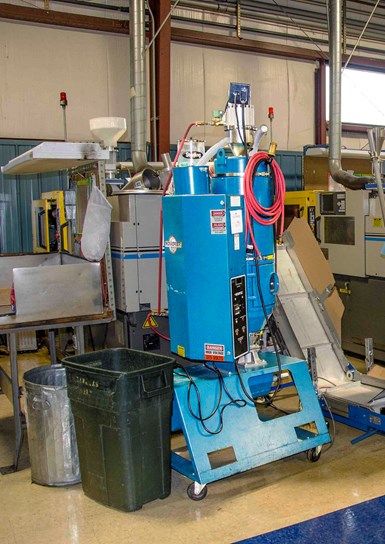
Factor in the cost of energy to run dryers into your job costs.
Drying material consumes a fair amount of electricity to keep those heaters running all day. The same is true for mold-temperature controllers, oil heaters, and other auxiliary equipment. The initial cost of the dryer, like all capital equipment, is usually factored into the facility’s overhead. However, you should factor in the cost to run job-specific equipment. Your maintenance department can calculate these costs per hour, which you then add to the intended machine’s hourly rate when quoting the part.
If an opened bag or box of hygroscopic material is stored in a humid environment, it can literally take days to dry.
Another part-cost factor that is rarely taken into account by molders is the thermal conductivity of the base resin. Thermal conductivity is the primary variable on how much heat is required to melt the material in the barrel. It doesn’t matter if your shop has hydraulic or electric molding machines: They both use electric heater bands to help melt the material. Hot-runner molds use that much more electricity.
Without getting too technical, it takes about twice as much electricity to melt semi-crystalline materials such as PE, PP, and nylon as it does to melt amorphous materials such as PC, acrylic or ABS. Therefore, it would be smart to add a small upcharge for processing semi-crystalline materials. Note: It doesn’t matter what the weight of the part is, or what the size of the machine is. Base the added cost on the throughput of the material in lb/hr, which is equal to the number of shots/hr times the shot weight in pounds.
What About Additives?
Does the material have any abrasive fillers, such as glass? When you run an abrasive material, such as a 33% glass-filled nylon, gate wear in the mold should not be your only concern. Everything from the vacuum hose in the gaylord all the way to the sprue bushing in the mold will also be subject to wear. The first thing to go will probably be your shot size repeatability because the seat on the non-return valve is worn out. The next thing to go is the screw, and then the barrel. A non-return valve is not too expensive, but a screw and barrel can cost you thousands of dollars—especially in downtime waiting for one to arrive from the supplier—assuming it even has one in stock. Therefore, you would be remiss if you did not factor in an additional cost for molding abrasive materials, as well as having a spare non-return valve and screw available.
It would be smart to add a small upcharge for processing semi-crystalline materials.
Does the material have a flame retardant or other additive known to leach out during processing? If so, that’s another cost factor that should be taken into account. Production may need to be shut down at least once per shift to clean the parting line of the mold. Additionally, the entire mold will need to be disassembled to remove the buildup of sticky outgassing from the vents, ejector pins, etc. at a much shorter-than-usual preventive-maintenance interval. A mold running g-p natural ABS can go 100,000 to 200,000 cycles before it needs a PM to clean the vents, pins, etc. The same mold running an ABS with a flame retardant, an oddball colorant, or some other additive may require the PM interval to be only 25,000 to 50,000 cycles.
The last two material and colorant costs you need to capture are those incurred during startup and color changes. It can take a lot of time and material to switch from a dark color to a light color—especially in a large machine. Purging compound is not cheap. And if you have to pull and clean the screw in order to avoid black specs in a clear part, that will cost you several hours of press time and labor hours from the maintenance department.
When you combine all these small costs, they can add up to a very large cost, which most molders don’t take into account when quoting a job. More importantly, to get those desirable long-running jobs you need to know which costs are relevant and which aren’t. When you take into account all of the details, you end up knowing your true costs and true profit with much greater accuracy. The best part about precision part quoting is that you won’t get upset if you lose a job to a lower bidder. You will simply feel sorry for the molder that doesn’t know how to quote.
In summation, the following part-weight and material-cost factors should be taken into consideration when quoting a molded part:
• Part volume;
• Type of material: amorphous or semi-crystalline;
• Specific gravity of the material;
• Annual quantity of parts to produce;
• Material cost based on order quantity;
• Material cost per part—not per pound;
• Material margin;
• Potential material cost increases;
• Material abrasiveness;
• Material additives;
• Colorant cost based on order quantity;
• Colorant margin;
• Colorant letdown ratio;
• Color-matching sampling costs;
• Minimum material order quantities;
• Labor cost for colorant feeding or blending;
• Scrap factor;
• Reject factor;
• Auxiliary equipment power-consumption costs;
• Runner weight and allowable regrind percentage;
• Labor and storage costs for scrap conversion;
• Startup and color-change costs.
Many of you are probably saying to yourself, “I estimate five jobs a day. I don’t have the time to take all of these factors into consideration.” I completely understand. However, I recommend you throw away your dartboard and start to write a spreadsheet program to make the task quick and easy. Most ERP and MRP software programs include a module for quoting parts. I have yet to see one that takes all of the costs I mentioned into consideration. That often leads to underbidding low-volume jobs and overbidding long-running jobs. It’s unfortunate that writing your own program is currently the best way to go, but the profitability and livelihood of your company depend on it.
About the Author: Jim Fattori is a third-generation molder with more than 40 years of experience in engineering and project management for custom and captive molders. He is the founder of Injection Mold Consulting LLC in Pennsylvania. Contact: jim@injectionmoldconsulting.com;
injectionmoldconsulting.com
Related Content
How to Select the Right Tool Steel for Mold Cavities
With cavity steel or alloy selection there are many variables that can dictate the best option.
Read MoreWhere and How to Vent Injection Molds: Part 3
Questioning several “rules of thumb” about venting injection molds.
Read MoreFundamentals of Polyethylene – Part 6: PE Performance
Don’t assume you know everything there is to know about PE because it’s been around so long. Here is yet another example of how the performance of PE is influenced by molecular weight and density.
Read MoreThree Key Decisions for an Optimal Ejection System
When determining the best ejection option for a tool, molders must consider the ejector’s surface area, location and style.
Read MoreRead Next
INJECTION MOLDING: Another Way to Deal with Regrind
You can run into a lot of problems molding parts from a blend of regrind and virgin material. Might you be better off using 100% regrind?
Read MoreGet Better at Quoting Injection Molded Parts: Part 1
Follow these detailed tips to get you the jobs you want. This installment focuses on the various raw material aspects of quoting.
Read MoreBack to the (Re)Grind
Some amount of scrap—generated in startup, shutdown or defective parts—is inevitable. How can you reclaim regrind into new profitable parts?
Read More



